How classic-rock juggernaut Journey turned a whole new generation into believers
By Chris Neal
Jonathan Cain is in the midst of a minor crisis. He was just shopping with his son in the Irish capital of Dublin when his wife called to let him know that their laptop computer has gone kaput, the victim of a virus that hacked all their credit cards—except for one, which happens to be a brand that isn’t welcomed by merchants here in Dublin. So while his wife reports the theft and procures new credit cards, Cain has had to head back to his hotel to exchange cash for euros so he and his son can continue seeing the sights. It’s a problem that could happen to any international traveler abroad. But as the musician in the hotel lounge reminds Cain on his way back out the door, he’s not just anyone. “The guy is playing ‘Don’t Stop Believin’ as we’re leaving,” notes Cain, making his way back out into Dublin’s bustling streets. “It’s too funny.”
Journey keyboardist Cain, guitarist Neal Schon and former singer Steve Perry wrote that particular song a full 30 years ago, but its explosive resurgence—“Believin’” is by far the most-downloaded song to have been recorded in the 20th century—serves as a symbol for their band’s own unexpected return to rock ’n’ roll glory. Since the departure of Perry and drummer Steve Smith in 1998, the group had endured several years of plummeting album sales and a revolving door of lead singers. The unlikely road back to a full-on Journey revival began on June 10, 2007, when “Don’t Stop Believin’” was used as the soundtrack for the controversial closing scene of the popular TV mob drama The Sopranos’ series finale. The song had been nipping at the edges of popular culture for the previous few years, becoming the unofficial theme song for the 2005 Chicago White Sox’s successful World Series run. But The Sopranos’ uniquely incongruous usage of the song gave it an all-new cultural cachet. “That started the ball rolling,” says Schon.
The other major element of the group’s rebirth came that same fateful summer, when Schon saw a series of YouTube videos featuring Filipino-born Arnel Pineda and was floored by the singer’s power and range. “The guy’s a true chameleon,” Schon says. “He can croon with the best but he can also rock with the best.” Pineda uprooted himself to head stateside, and was thrust into the limelight as Journey’s new lead singer beginning in early 2008. His recorded debut with the group, that year’s Revelation, became Journey’s first Top 5 hit and platinum seller since Perry’s acrimonious exit. The subsequent tour attracted more than a million paying customers in the next two years. Don’t stop believing, indeed.
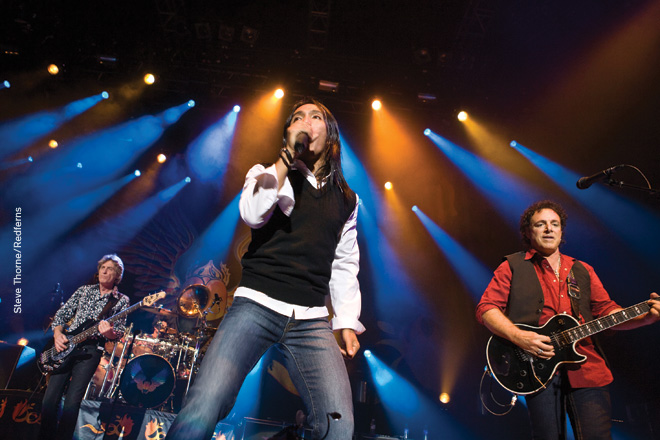
Journey’s Ross Valory, Arnel Pineda and Neal Schon onstage in England, June 2008
These are just the latest unlikely twists in a story that began almost four decades ago when Santana band alumnus Schon and bass player Ross Valory first formed the group in San Francisco. Several albums and personnel changes later, Journey found Perry and a mainstream breakthrough with 1978’s Infinity. Cain and Smith joined shortly afterward, solidifying the lineup that would dominate radio in the early 1980s with hits like “Who’s Crying Now,” “Open Arms,” “Separate Ways (Worlds Apart)” and “Faithfully.” Albums like 1981’s Escape and 1983’s Frontiers sold in the multimillions; a 1988 Greatest Hits compilation has sold 15 million by itself.
Still, Valory and Smith departed during the making of 1986’s Raised on Radio, and the remaining trio soon drifted apart. Cain and Schon formed the supergroup Bad English, but never imagined that Journey was truly finished. “We never officially broke up,” Schon says. “It was never like, ‘I hate you, I never want to be in this band again.’ It was just like, ‘I need a break. I’m burned out and need some time.’ That time turned into 10 years.” The 1980-1985 lineup reunited for 1996’s platinum Trial by Fire. But when Perry balked at touring due to health problems, the remaining members (minus Smith, who was replaced with Bad English drummer Deen Castronovo) elected to hit the road without him. Perry replacement Steve Augeri was initially criticized as a sound-alike, but he hung in for a respectable eight-year run before being felled by throat trouble. When Augeri substitute Jeff Scott Soto didn’t click, the way was clear for Pineda’s entrance.
Journey’s latest album, Eclipse, found the group working again with longtime producer Kevin Shirley and returning to a harder-rocking sound than has been heard from these guys in many years. “It was Neal’s vision on this one,” Cain acknowledges. “He wanted to make a guitar-driven rock record and show less of the pop side. I said ‘Fine, we can do that.’” The twosome began writing songs—their first effort, “City of Hope,” inspired by Pineda’s story and the group’s triumphant October 2009 show in his native Manila. Back in the U.S., Schon and Cain wrote the remainder of Eclipse with a couple of contributions from Pineda. After only five weeks’ recording at Fantasy Studios in Berkeley, Calif., Cain and Schon headed to Nashville (where Cain has a home) to finish up with mixer and mastering engineer David Kalmusky. Now the band has already begun a projected two-year world tour. “Then we’ll take another year off and live our lives again,” Cain figures. “It’s what we do: work like hell and then chill.” We spoke with Cain and a comparably unharried Schon, relaxing at the group’s Dublin hotel, about Journey’s remarkable past and still-unfolding future.
How was recording Eclipse?
CAIN: We made our demos, then Kevin Shirley said, “Well, I’ve only got five weeks free in my schedule, so let’s not rehearse.” So we went straight into Fantasy Studios, where we had done Escape and Frontiers, with these detailed demos that I had done with Neal. Backgrounds, vocals—everything was pretty much nailed down. Then we had to see if the arrangements were all right and made sense. Kevin took the blueprint that we gave him and we went from there. We were only going to do five songs, but the thing took on a life of its own. Neal and I said, “Well, we’re here, let’s get this done.” We ran out of time with Kevin, but Neal and I weren’t convinced it was totally finished yet.
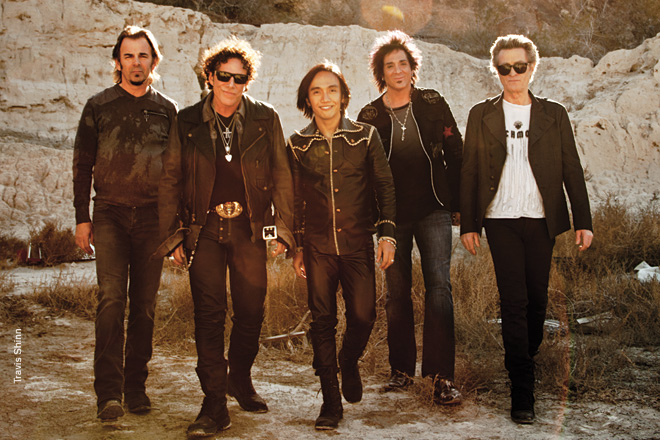
Jonathan Cain, Neal Schon, Arnel Pineda, Deen Castronovo, Ross Valory
What did you do after Kevin left?
CAIN: We went to Nashville and found this guy, Dave Kalmusky. My daughter Madison’s a country singer, and she really liked his mixing. I gave him a song, “Anything’s Possible,” and he mixed it brilliantly. We said, “OK, this sounds great, we’re going to let this guy mix the record.” Kevin was a little bit reluctant to let go of that, but we told him this is what we want for the record.
SCHON: I was glued to the chair with Dave trying to get it as zoned in as we could, and Jon would come in a few times a day. Overall the record sounds the way I imagined it sounding, so it was worthwhile. It was a lot of extra time, but you get out of it what you put into it. I’m happy with the results.
What has Arnel brought to the band?
CAIN: He’s able to switch gears easily because of all the club work he did before joining the band. When he wants to turn on the Bono thing, it’s right there. Whatever the song calls for, he’s got it in his bag of tricks. He’s got quite a magic wand. He also brings a certain humility, a soulfulness. He’s got his feet on the ground, coming from the street like he did. He had been a homeless kid and made something of himself. He reminds us that life’s a bitch and you’ve got to get over yourself—but also that anything’s possible. It makes us all better for having him in our group.
How does your writing process work?
SCHON: Songs always start with music and melody for me. I write the music, lay it out the way I hear it, organize everything, arrange it in my head. Then I’ll put up a mic and start singing the melodies that I hear against the bass and the chords. From there I’ll give it to Jon and he’ll do his dance with it—write the lyrics, maybe change the melody a little. Once in a while I come up with a lyric or two, but it’s really not my forte so I don’t try to press the issue.
Lyrically, what is the album about?
CAIN: The concept stems from the Hindu belief that man and universe are connected in an endless circle. Everything is woven together: nature, man, the universe, all of it. We coexist on the physical, spiritual and metaphysical plains. It’s another way of looking at God and life and yourself. I guess the message is to slow down and take a look at how you relate to the rest of the world. I know it sounds like a mouthful, but it’s about giving yourself permission to dream and have hope. Don’t just sleepwalk through your life.
What inspired all that?
CAIN: I do a lot of reading. Wayne Dyer wrote this book called The Power of Intention a few years ago, and it hit me like a brick. He’s a real thinker, and that book put me on the path. He adapted this stuff from what the Hindus believed back in the day, and I think they were really on to something. So we thought, “Hey, the ‘Don’t Stop Believin’’ guys can bring this.” It’s our job as writers and musicians to bring a richer sense of possibility. We get to sit around and think about all this stuff all day. (laughs) That’s what I get paid for, you know? I want to give something healthy to the fans, something they might be able to dream on. It’s not like I want to be Dr. Phil, but on the other hand I’ve been doing this for too long to just write crap. I refuse to do that.
When you’re writing, do you think ahead to how it’ll work onstage?
SCHON: Absolutely. I had that completely in mind for this whole record. We started playing in Europe, and they liked a lot of our harder stuff—songs that were album tracks, they dug all that. So we started trying to rock the show out more. We have so many ballads that we actually ran out of rock songs to play. That was the whole idea behind it, to write what we didn’t have.
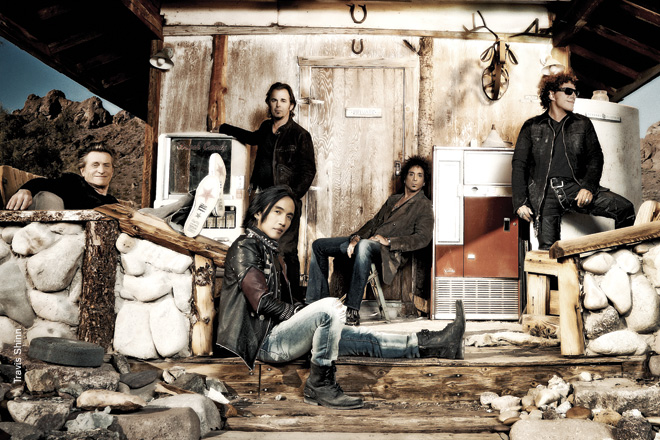
How do you build a guitar solo?
SCHON: Sometimes I come up with a theme before even going for a solo. I’ll have a melody in mind—sometimes it sounds like it could be a string line. Then I’ll work off it and weave in and out of it. I like to do that because then there’s a built-in melody. I like people to be able to hear a theme as well as some riffing. Apart from that I won’t have anything else planned at all. I fly by the seat of my pants and express what it feels like to me. I don’t like to play zillions of notes. I do like to burn a bit here and there, but not all the time. I try to play what the song requires and not cram too much in.
How has touring changed over the years?
CAIN: The buses are a lot nicer, the hotels are a lot more accommodating. It’s more expensive—everything costs more, so your bottom line is definitely pinched. We’re not taking home the kind of money we used to, even though ticket prices are up. You used to be able to see Journey for $17.50. Those days are gone. The other big change, one that’s frankly a pain in the ass, is flying. Because of the 9/11 thing, the security thing, they want to stop and frisk you. I recently got randomly selected to get messed with, and I’m like, “You’ve got to be kidding me. How many seats are we buying on your airline, and you’re going to screw with me?” But they do. In the old days it was pretty cool—we could afford our own plane, and we did that for a few tours. Now it makes more sense to be on the bus if at all possible. It’s much more comfortable.
Does the band get the respect it deserves?
SCHON: I feel like now it does. Finally! It’s taken a long time. I think that respect has come out of our refusing to go away, as well as the demand for our older music. It’s embedded in stone now, and we’re never going anywhere. We can hang onto it as long as we want. I always felt it was not our time to go away. Even when we did take a long hiatus waiting for whoever to come back, there was always something there that felt like the band wasn’t done.
How did you decide to go on without Steve Perry?
SCHON: The turning point for me was when he went out on his own solo tour and started playing all the stuff we wrote together. He had a lot of success with a couple of solo records, so I thought he’d stick to that. But then I heard he was doing eight or nine Journey songs in the set. At that point I went, “Wait a minute, Jon and I wrote the other third of those songs. We have every right to play that stuff as well.”
Do you feel obliged to sound like Journey?
SCHON: We’ve figured out that we just sound like Journey when we get together and play. It’s never a problem. We have lots of different sides now, but we always have. If you listen to Escape, which is 30 years old now, there’s a wide spectrum of music on that record. There’s hard stuff, soft stuff and in between. I see people who make a fortune off a hit song, then try to write 20 more exactly like it. We try not to repeat ourselves or get stuck in a mold. I want to move forward, I don’t want to stay in neutral. We could easily play nothing but our greatest hits forever and do very well, but it’s important to keep growing.
What are your hopes for the band?
CAIN: I know it’s probably dreaming to think this, but I feel that we could still broaden our fan base. We’ve only got a few years left doing this—10 at the max, probably six or seven before we’re done. I’d like to make the best of where we play and how we play. God knows they play our old stuff to death. We forged some new territory with Revelation, and it allowed us to do this. It gave us the freedom to do something new, so let’s do it right. M
Order this Journey issue here for only $5 >>
How a classic-rock powerhouse found rock redemption with a new generation of fans. Read the print edition for even more exclusive content.
Subscribe to M Music & Musicians magazine
$12 for one year >>
ALSO IN THIS ISSUE:
SURROUND SOUND – The frustrating history, uncertain present and promising future of music in the round.
MY MORNING JACKET – Kentucky’s finest work up a loose and lively new album in a church gym.
COLBIE CAILLAT – Falling in love proved just the thing for making her latest album shimmer and shine.
BÉLA FLECK – The banjo king and his original Flecktones aim to reinvent bluegrass and jazz yet again.
DEF LEPPARD – Virtuoso guitarists Phil Collen and Vivian Campbell take us inside a hard-rock hit machine.
“WEIRD AL” YANKOVIC – Being pop’s most beloved funnyman for almost three decades is no laughing matter.
JOSS STONE – Bringing a little soul to Nashville.
MARC BROUSSARD – He just wants to make you dance.
ADAM ANDERS – Behind the scenes with Glee’s music man.
MARIANNE FAITHFULL – A ’60s icon expands her legacy.
WHO’S NEXT – Katie Costello Ambrose Akinmusire Ximena Sariñana
SPOTLIGHT – The Greencards The Jolly Boys Matt Nathanson Christina Perri Gomez Youssou N’Dour Battles
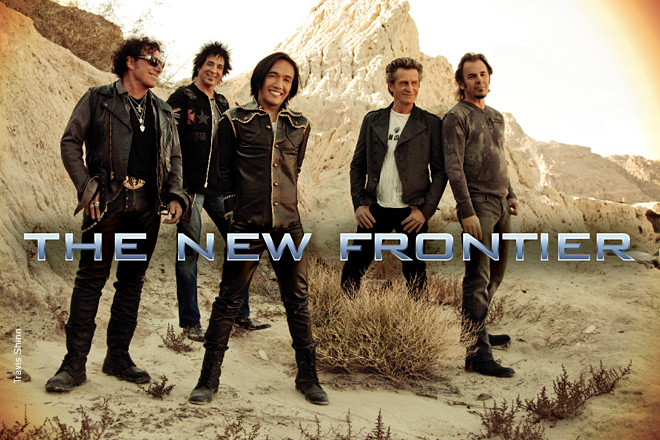
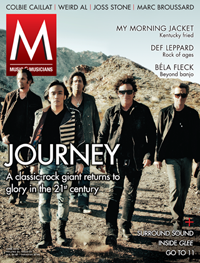



comment closed